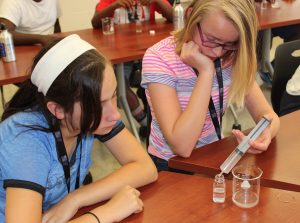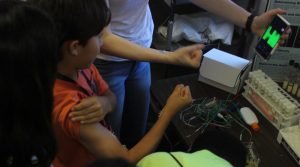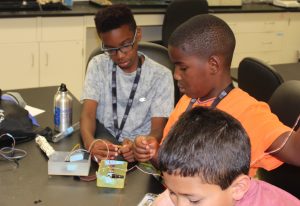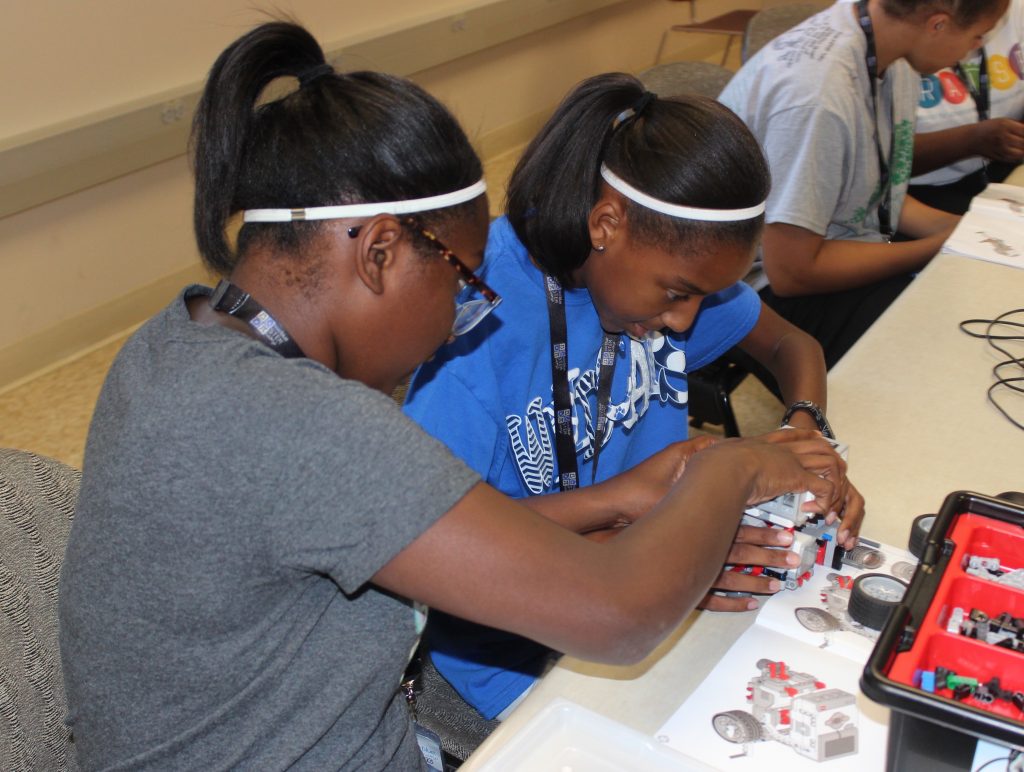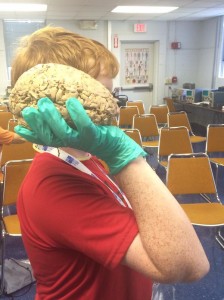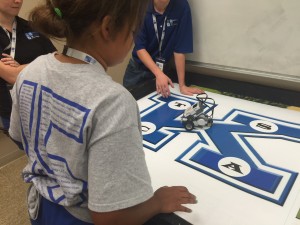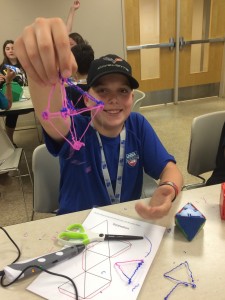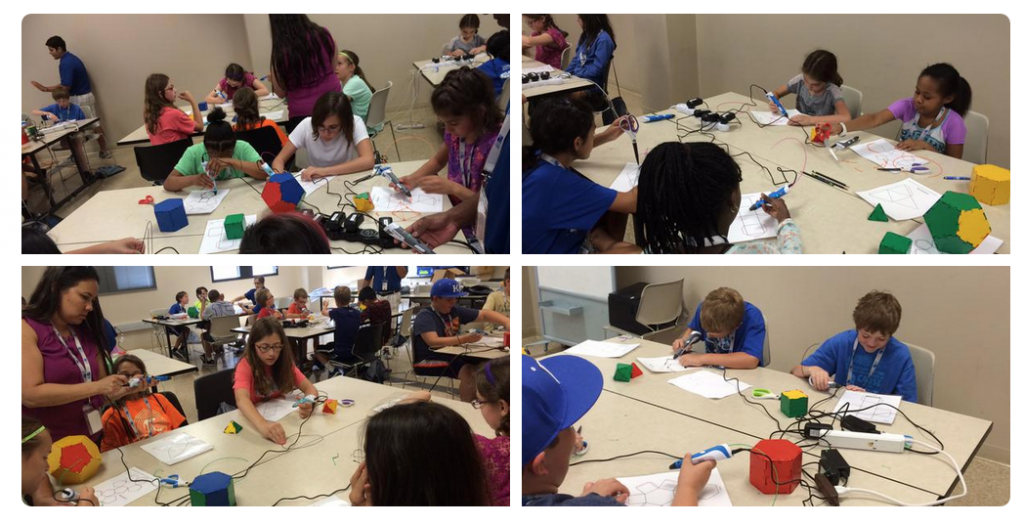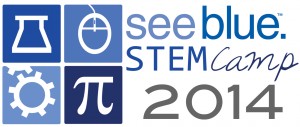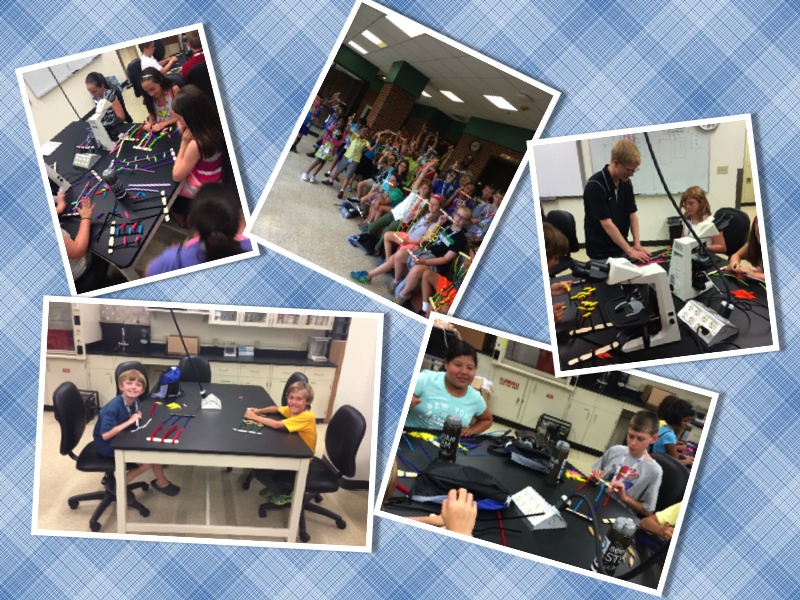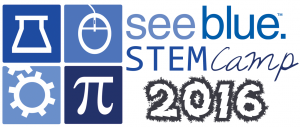 We had beautiful weather to kick off the second of our two weeks of 2016 UK See Blue STEM Camp! We are very excited to welcome 217 campers this year to camp! One hundred forty-five of them started today! Registration went very well this morning and we really appreciate everyone’s patience in getting all the forms UK requires turned in. You all are awesome!
We had beautiful weather to kick off the second of our two weeks of 2016 UK See Blue STEM Camp! We are very excited to welcome 217 campers this year to camp! One hundred forty-five of them started today! Registration went very well this morning and we really appreciate everyone’s patience in getting all the forms UK requires turned in. You all are awesome!
Just a note about the consent and assent forms that we ask for every year. Our camp is subsidized by an NSF grant that requires research and reporting to the agency. The purpose of the research is to develop a camp model that promotes STEM careers to adolescents and can be replicated. We also look at students attitudes towards STEM and the impact of our activities. We do not collect test scores or anything similar for your students nor do they have to be a Fayette County student to participate. Without this grant and consent and assent to participate the camp simply would not exist. We never report any names or any individual data…it’s always aggregated together!
We will post a blog post each night this week with some highlights from the day and some conversation starters. The conversation starters are meant to help you get over the “What did you learn today?” “Nothin’” or <shrugging the shoulders> we often see at the adolescent age. We’ll also post a link to the photos we are taking throughout the week. If at any time you want a photo removed that is of your child, please let us know and we’ll be happy to take it down.
Today the students split up and 1/2 saw Dr. Bruce Walcott and the other 1/2 saw Dr. Isabel Escobar. (If you like TED talks, you can view hers here https://m.youtube.com/watch?v=
Red/Blue Groups
Today the students got to experience the awesome world that Dr. Robin Cooper immerses them in! The students got to see a real heart, lungs, and brain today. They got to put probes on themselves to measure the electricity going through their bodies. They also got 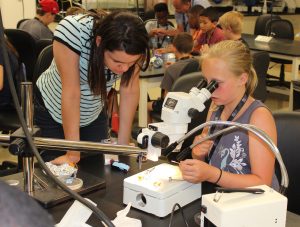 to view and make conjectures about larvae and other fruit fly stages when they were exposed to different colors of light.
to view and make conjectures about larvae and other fruit fly stages when they were exposed to different colors of light.
All four groups…
In robotics, students started by engineering their robots. They got to build their robot and get to know it. They always love this part, but we’re eager to continue moving them on to basic programming challenges. We have some exciting new challenges planned for them this week!
In their words… Each day we’ll post some excerpts from the students’ reflections of what they learned each day at the STEM Content session. We don’t correct for spelling or grammar in these 🙂
BLUE & RED – Dr. Cooper
- You can do more with flies than just kill them
- I learned that the certain type of mutated fly we used brain was affected by blue lights. The blue light stimulated their nerves therefore after a while paralyzing them
- I learned that we don’t inhale to take in more air, but cause the acididty in our blood increased
- I learned that if you are dehydrated then youre blood gets thicker
- I learned that electrods can close a open circet by sensing your nerve signals
- One thing i learned is that salt acts as a buffer against CO2
- When you smoke some of your organs are larger than people who didn’t smoke
- That scientists use fruit flys to cure about 60 desseses
- We got to look threw a microscope
- I liked learning that humans in the future could be treated by light
- The real life models such as brain, lungs, and spine
- I like when we learned about blood and organs and how they work and how to keep them healthy
- Yes, i want to learn more about the human body, because it is so very intresting
- Yes. because i want to see if you can modify other animals
- What happens when you use red light on the flies. because we did not get to try it
- Yes it is interesting that flys have the same leg muscles as us
- I learned about the different types of engineering and what causes buoyancy. i also learned about how anechoic chambers work
- I learned that there was a girl who built the first ac
- That there is a type of floor that when you stand on it you dont feel any vibrations from the regular floor
- A concrete boat can float
- The flavors of engineering, such as: civil, biomedical, mechanical, etc.
- I liked the anechoic chamber because it was relaxing, the types of engineering because I know I don’t have to do all types of engineering, and I liked experimenting w/ buoyancy
- The tour of the engineering departments
- We learned by hands-on activities rather than a worksheet
- Yes because i think engineers get to do whatever they want to build & i think some people have really cool designs
- Yes. it was ver fun, and is beneficial to our society
- Whats in diapers and that food can be chemestry
- I learned that the chymical engeneers also work with food not just everyday stuff
- I learned that many things contain polymers even some surprising things
- I learned that sodium polyacrylate, when mixed with liquid, becomes gel-like and is used in diapers
- I liked the exeriments and using different chemicals to see a reaction
- It was fun to do experiements with sodium polyacrylate
- I like that i learned a variety of things that have to do with the job of a chemical engineer, and that i now know about a new, intriguing option for my future
- I like that we did many hands-on activities as well as relations to real life
- Yes it is quite interesting learning about polymers and reactions
- I would because i like to experiment with different chymicals
- Yes because I get to learn all about the things I use every day and the value of it
- Yes, because i want to learn more about how does the sodium polyacrylate get into solid that quick
- Yes because i know now that chemical engineering is very versatile and has a very wide variety
- I absolutely would. i love learning new things about how the world works and different compounds and mixtures as well
Conversation Starters… We know that your child is getting to the age where it might be like pulling teeth to get them to talk about their day beyond “It was fine.” “It was fun.” Each day we’ll post some suggested conversation starters centered on camp activities or STEM-related themes.
Yellow/Green – Dr. Walcott:
- Tell me about how you assembled your robot. Did you follow instructions? Did you just try to figure out what parts went together?
- Is there a particular field of engineering that you think might interest you?
- How many pennies did your boat hold? If you could build it again, what would you do differently?
Yellow/Green – Dr. Escobar:
- What happened when you mixed the powder and water and turned it upside down?
- What does a chemical engineer do?
- Is there a particular field of engineering that you think might interest you?
- Tell me about how you assembled your robot. Did you follow instructions? Did you just try to figure out what parts went together?
Red/Blue Groups:
- How did your fruit flies react to light? What did they do? How did you measure their movement?
- What was your favorite body organ you learned about? What kinds of things affect its size?
- Tell me about how you assembled your robot. Did you follow instructions? Did you just try to figure out what parts went together?
Photo of the Day… Each day we’ll post a camp highlight. Click here to go to the pictures. Please note that we try to capture pictures of all the campers, but we cannot guarantee that we will get every single one. We try our very best to though! Also we are STEM teachers and not full time photographers, so our pictures are not perfect and we leave them unedited, so if you love to edit photos…feel free!

